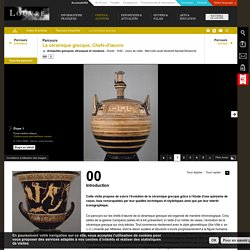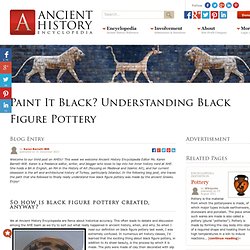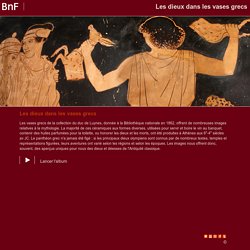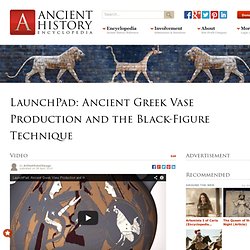Zoom
Trash

(1) Facebook. Frozen for millennia, an ancient Greek soldier is freed to charge into battle once again. Aeon email newsletters are issued by the not-for-profit, registered charity Aeon Media Group Ltd (Australian Business Number 80 612 076 614).

This Email Newsletter Privacy Statement pertains to the personally identifying information you voluntarily submit in the form of your email address to receive our email newsletters More generally, when visiting the Aeon site you should refer to our site Privacy Policy here. This Email Newsletter Privacy Statement may change from time to time and was last revised 5 June, 2018. By clicking ‘Subscribe’ you agree to the following: We will use the email address you provide to send you daily and/or weekly email (depending on your selection).
Unsubscribing You can change your mind at any time by clicking the ‘unsubscribe link’ in the footer of emails you receive from us, or by contacting us at support@aeon.co Security of your personal information We are committed to ensuring that your information is secure. Sharing your personal information. Animation d'un vase grec / Greec vase animation. Parcours : La céramique grecque – Chefs-d'œuvre. Cette visite propose de suivre l’évolution de la céramique grecque grâce à l’étude d’une quinzaine de vases, tous remarquables par leur qualités techniques et stylistiques ainsi que par leur intérêt iconographique.

Ce parcours sur les chefs-d’œuvre de la céramique grecque est organisé de manière chronologique. Hermes' Favour. Plongeon au cœur d’un vase grec antique avec Apotheon. The Cheat - Ancient Olympics: Bridging Past and Present. Animating the Battles and Mythology of Greek Vases. “Combat,” part of the Ure Discovery series from Panoply animating Greek vases (GIF Hrag Vartanian/Hyperallergic, via YouTube) Greek vases have some of the most lively of ancient art with their flat figures engaged in combat, sports, and epic mythology.

A duo called Panoply has been turning these vases into animations to explore their stories and make classical archaeology more engaging for a younger crowd. Still from “Clash of the Dicers” (2014) (GIF Hrag Vartanian/Hyperallergic, via YouTube) Animator Steve K. Simons, who started experimenting with the vases in 2007, collaborates with Sonya Nevin, a research fellow at the University of Roehampton in London with a doctorate on ancient Greek warfare from University College Dublin. On October 17, Panoply is launching its newest animation called Hoplites! Here are a few of Panoply’s recent animations: View more Greek vase animations on the Panoply site. Paint It Black? Understanding Black Figure Pottery. We at Ancient History Encyclopedia are fierce about historical accuracy.

This often leads to debate and discussion among the AHE team as we try to sort out what really happened in ancient history, when, and why. So when I read our definition on black figure pottery last week, I was extremely confused. In numerous art history classes, I'd learned that the exciting thing about black figure pottery, in addition to its sheer beauty, is the process by which it is made. The pots were made of clay then decorated with slip (clay plus water), then fired in a three part process: first with oxygen present in the kiln turning the pot red, then at a higher heat and no oxygen (called reductive firing) that made the whole pot turn black, and finally at a lower heat with oxygen present again, turning the un-slipped part of the pot back to red, leaving the decoration black.
The quest for historical accuracy became a journey down two paths. Inicio. La religión es un camino ideal para quien desee penetrar en el corazón de la antigua Grecia.

Más allá de las divisiones políticas que fraccionaban a las ciudades rivales y celosamente autónomas, la religión ofrecía una plataforma de prácticas y creencias que, como la lengua, unía a los griegos. La importancia de la religión helena se debía también al fundamento mítico sobre el cual se apoyaba y que le ha asegurado una proyección universal. Vase qui parle. ARS CRETARIAE ARCHEOCERAMIQUE. Animation d'un vase grec / Greec vase animation. How were the ancient Greek vases made - painting process. Les dieux dans les vases grecs (BNF) Léto est l’une des conquêtes amoureuses de Zeus.

Quand elle fut enceinte, la jalouse Héra la poursuivit de sa colère, interdisant à la Terre d’accueillir la naissance à venir, et au soleil de briller là où naîtraient ses enfants. Elle trouva finalement refuge sur l’île de Délos où naquirent les jumeaux Artémis, déesse vierge de la chasse, liée à la lune, et Apollon, le dieu musicien proche du soleil, qui préside aussi aux divinations et aux guérisons. Making Greek Vases. LaunchPad: Ancient Greek Vase Production and the Black-Figure Technique. Used for the storage and shipment of grains, wine, and other goods, as well as in the all-male Greek drinking party, known as the symposium, ancient Greek vases were decorated with a variety of subjects ranging from scenes of everyday life to the tales of heroes and gods.

The two most popular techniques of vase decoration were the black-figure technique, so-named because the figures were painted black, and the red-figure technique, in which the figures were left the red color of the clay. The black-figure technique developed around 700 B.C. and remained the most popular Greek pottery style until about 530 B.C., when the red-figure technique was developed, eventually surpassing it in popularity. This video illustrates the techniques used in the making and decorating of a black-figure amphora (storage jar) in the Art Institute of Chicago's collection.
Original video by ArtInstituteChicago. Embedded by Mark Cartwright, published on 04 April 2014.